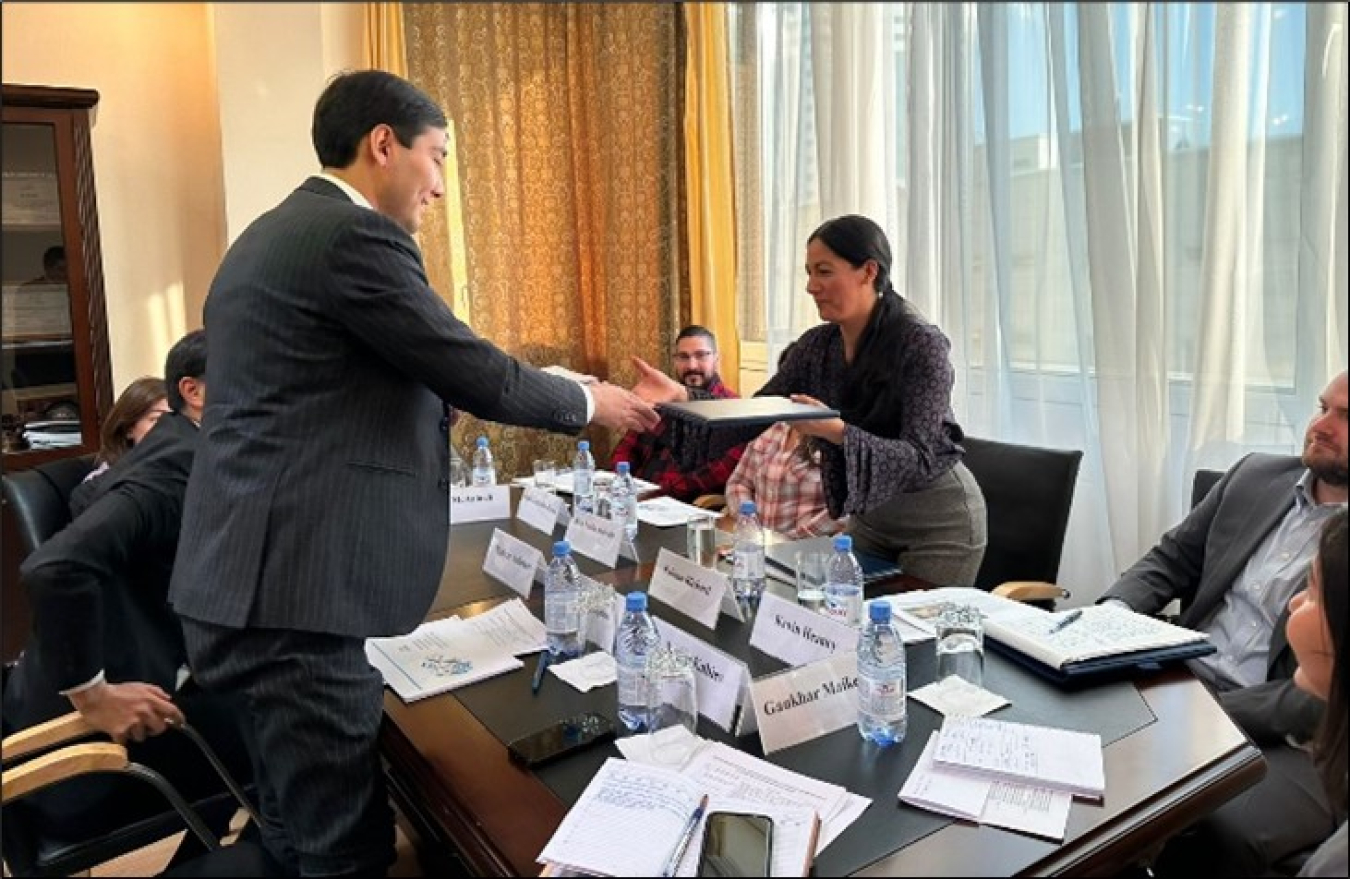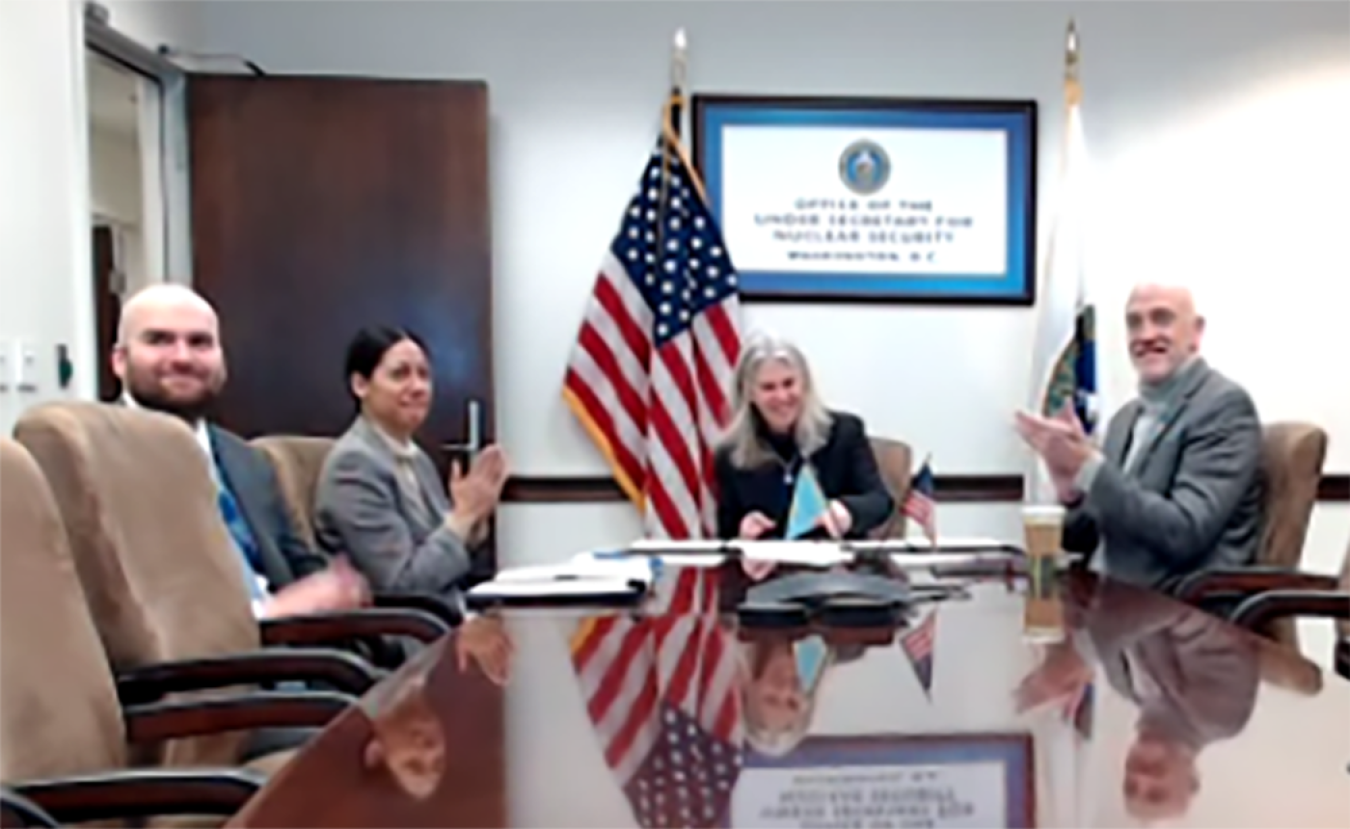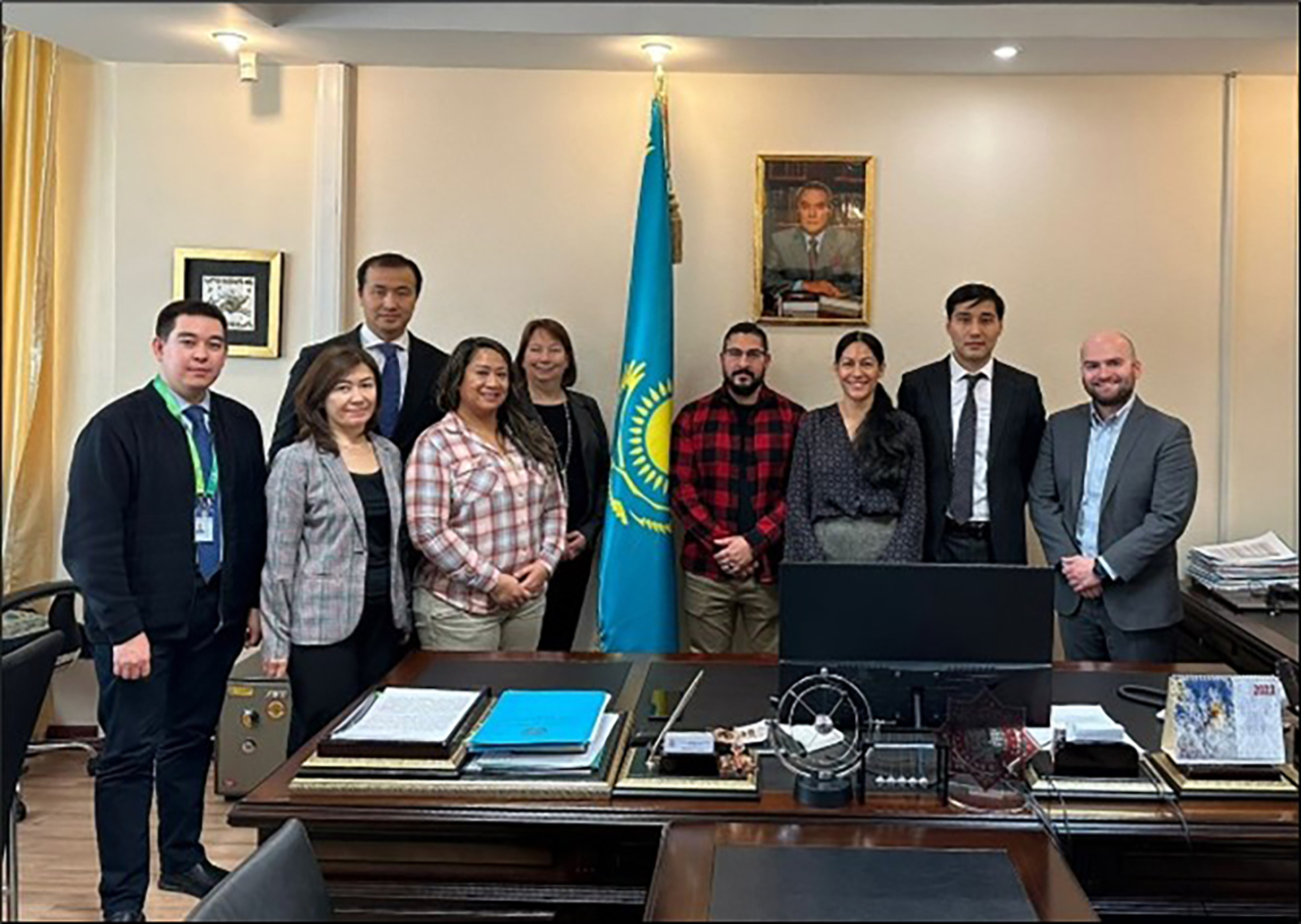Last month, NNSA and the Kazakhstan Ministry of Energy’s Committee for Atomic and Energy Supervision and Control enhanced their longstanding relationship with a signed joint statement on cooperation in emergency preparedness and response.
National Nuclear Security Administration
March 17, 2023
Last month, NNSA and the Kazakhstan Ministry of Energy’s Committee for Atomic and Energy Supervision and Control (CAESC) enhanced their longstanding relationship with a signed joint statement on cooperation in emergency preparedness and response.

The agreement will help improve Kazakhstan’s emergency preparedness and response capabilities.
NNSA Administrator Jill Hruby signed the agreement during a virtual meeting with CAESC’s Deputy Chairman Gumar Sergazin. Kazakhstan’s Vice Minister of Energy Zhandos Nurmaganbetov signed the joint statement following the meeting.
“Our presence here today is a testament to the United States’ and Kazakhstan’s commitment to strengthening cooperative efforts to continue to address nuclear safety and security goals, and specifically, advancements in emergency preparedness and response,” Hruby said. “Given the situation in Ukraine, it is paramount that we work together to build capacity so the region is prepared to respond.”
“We note a very positive trend in the joint work done, as well as the fact that our cooperation will make a significant contribution to the prevention of nuclear and radiological threats and emergencies in the interests of the security of both countries,” Deputy Chairman Sergazin said.
The following week, representatives from NNSA’s Office of Counterterrorism and Counterproliferation visited Astana, Kazakhstan, and exchanged physical, signed copies of the agreement.
Our presence here today is a testament to the United States’ and Kazakhstan’s commitment to strengthening cooperative efforts to continue to address nuclear safety and security goals, and specifically, advancements in emergency preparedness and response.

The joint statement highlighted previous cooperation between the two countries, such as radiological and nuclear detection equipment NNSA loaned to Kazakhstan, and areas for future collaboration, including offers of radiation detection and telecommunications equipment to establish an Emergency Operations Center for CAESC in Astana. NNSA will provide the necessary equipment and resources for the center on long-term loan or as a cost-free donation to help CAESC build its emergency preparedness and response posture.
The NNSA team visited the U.S. Embassy in Astana, where they briefed U.S. representatives on the agency’s efforts in country.
The team later traveled to Almaty to visit Kazakhstan’s Nuclear Security Training Center. While in the city, team experts also examined the previously loaned detection equipment at the Institute of Nuclear Physics, provided hands-on training, and recalibrated the equipment to improve detection capabilities.

